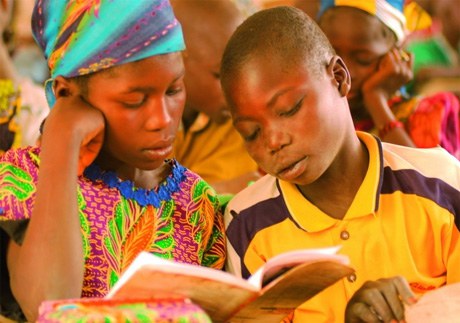
Addressing sexual health and HIV in school
A variety of factors social and cultural factors (taboos, traditions, mistaken beliefs), high prevalence of unprotected sex, insufficient information on sexual and reproductive health, lack of effective prevention programming make young people one of the population groups most exposed to HIV infection, as well as to unwanted pregnancies and sexually transmitted infections. But young people are also the life force and the future of their country. Young people need education and information that is adapted to their age, culture, and areas of interest. Equally important, they need people and structures able to support them, advise them, and give them adequate backing. Schools are the best and often the only place to reach the majority of young people prior to the start of sexual activity, and provide them with programming that can help them understand and avoid risky behaviours (WHO, 2003; World Bank, 2002).
This publication describes three German-supported initiatives in Africa (specifically in Guinea, Mozambique and Tanzania) and one in Latin America. All integrate sexual health and HIV prevention within school systems.
Important sexual health issues in both regions include early sexual debut, low access to information and services (notably inexpensive condoms), and high levels of unplanned pregnancy. In Sub- Saharan Africa, birth rates among girls aged 15-19 in rural areas are almost double those in urban areas. Girls with a secondary education are the least likely to become mothers, while among uneducated girls the birth rate is over four times higher.
Tanzania's PASHA
One of the African projects is Tanzania's PASHA (Prevention and Awareness at Schools of HIV/AIDS). The Tanzanian-German Programme to Support Health has supported the Ministry of Education and Vocational Training in implementing this project, with technical support by the Swiss Centre for International Health. The programme concentrates on Grades 5 to 7, with hour-long sessions run twice a week by peer educators. School counsellors do not attend sessions but assist in planning them, and counsel students when necessary. All sessions take place after school. Peer educators are elected by fellow students and trained to take control of the programme, with counsellors only playing a supportive role. A 2009 study of 22 participating schools indicated a marked and continued decline of teenage pregnancies from 41 in 2006 to 12 in 2009.
The four initiatives have all built up considerable experience about design and implementation. In line with their experience, they prioritize the following strategies:
- Improve quality of teaching: all the initiatives aim to improve the professional skills and knowledge of teachers, and the capacity of schools as learning institutions.
- Target intentions and behaviour, not just information: Knowing about risk is not enough. Vulnerable young people need new attitudes and specific life skills in order to avoid these risks.
- Include a special focus on girls: initiatives should include measures to help girls stay in school, avoid unwanted pregnancies and sexually transmitted infections, and improve their security and social status.
- Target the social environment of young people: initiatives should involve not only the young people themselves, but also address the conditions they live in.
- Differentiate between priority groups: surveys and other research are vital to identify the needs of different population groups and their levels of knowledge about sexual health and HIV.
- Produce specific tools for each priority group: a variety of media should be used, addressing both in-school and off-school settings.
Encourage regional and South-South collaboration: Regional cooperation can help share progress made on technical, policy and strategic levels. (March 2012)
